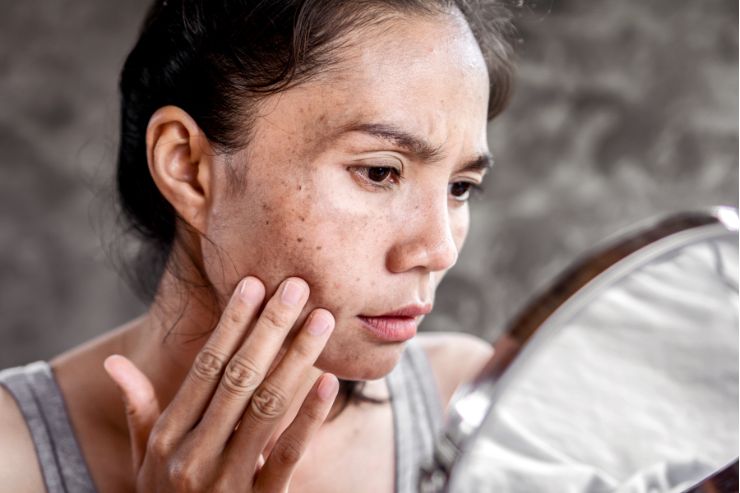
Skin pigmentation refers to the color of the skin, determined by melanin production. Excessive or uneven melanin production can lead to hyperpigmentation (dark spots or patches) or hypopigmentation (light spots). Factors such as sun exposure, hormonal changes, genetics, and skin injuries can contribute to pigmentation issues.
Topical Treatments: Prescription creams, serums, or gels containing ingredients like hydroquinone, retinoids, kojic acid, or vitamin C to lighten dark spots and even out skin tone.
Chemical Peels: Application of a chemical solution to exfoliate the outer layer of skin, improving texture and reducing pigmentation. Peels may include ingredients such as glycolic acid, salicylic acid, or trichloroacetic acid (TCA).
Laser and Intense Pulsed Light (IPL) Therapy: Advanced treatments that target melanin in the skin, breaking down dark pigmentation and stimulating collagen production for smoother and more even skin tone.
Microdermabrasion: Mechanical exfoliation technique that removes the outer layer of skin, promoting cell turnover and reducing pigmentation.
Microneedling: Treatment using fine needles to create micro-injuries in the skin, triggering the natural healing process and promoting collagen production. Helps reduce pigmentation and improve overall skin texture.
Cosmetic Dermatology Procedures: Techniques such as fractional laser resurfacing or dermabrasion to effectively target deeper pigmentation issues and improve skin tone.
Home Care Regimens: Personalized skincare routines and product recommendations to maintain results and prevent future pigmentation.